Complete Ragdoll Cat Grooming Guide: Essential Care Tips
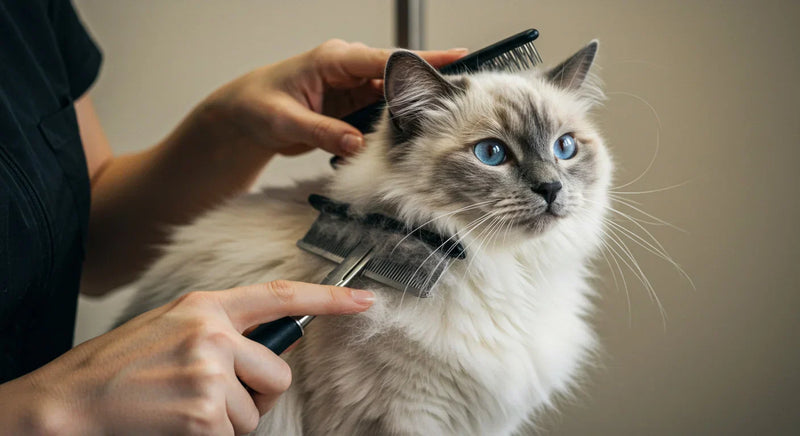
Ragdoll cats are beloved for their stunning blue eyes, docile temperament, and magnificent semi-long coats that feel as soft as silk. However, this beautiful fur comes with specific care requirements that every Ragdoll owner should understand. Ragdoll cat grooming is essential for their health, comfort, and overall well-being.
Many new Ragdoll owners feel overwhelmed when caring for their unique coat texture and length. Unlike short-haired breeds, Ragdolls require a more comprehensive grooming approach that goes beyond basic brushing. The good news is that with the right techniques and tools, you can easily maintain your cat's luxurious appearance while strengthening your bond together.
In this comprehensive guide, we'll walk you through everything you need to know about proper Ragdoll care, from essential brushing techniques to complete grooming routines that will keep your cat looking and feeling their best.
Why Ragdoll Cat Grooming is Essential
Understanding ragdoll grooming needs goes beyond keeping your cat looking beautiful – it's a fundamental aspect of responsible pet ownership that directly impacts your cat's health and happiness. Ragdoll cats have unique characteristics that make regular grooming particularly important compared to other breeds.
The semi-long, silky coat that makes Ragdolls so appealing also creates specific challenges. Without proper care, their luxurious fur can quickly become problematic, leading to discomfort and potential health issues. Regular ragdoll grooming sessions help you stay ahead of these problems while providing valuable bonding time with your pet.
Key benefits of consistent Ragdoll grooming include:
-
Prevents painful matting - Their fine, dense coat tangles easily without regular brushing
-
Reduces shedding - Proper grooming removes loose fur before it spreads throughout your home
-
Early health detection - Regular handling helps you notice lumps, skin issues, or injuries early
-
Maintains skin health - Brushing stimulates blood circulation and distributes natural oils
-
Prevents hairballs - Removing loose fur reduces the amount your cat ingests during self-grooming
-
Strengthens your bond - Gentle grooming sessions build trust and affection with your cat
-
Keeps them comfortable - Well-maintained coats prevent overheating and skin irritation
A groomed ragdoll cat is not only more comfortable but also healthier overall. When you know how to groom ragdoll cats properly, you're investing in their long-term well-being and ensuring they remain the beautiful, content companions they're meant to be.
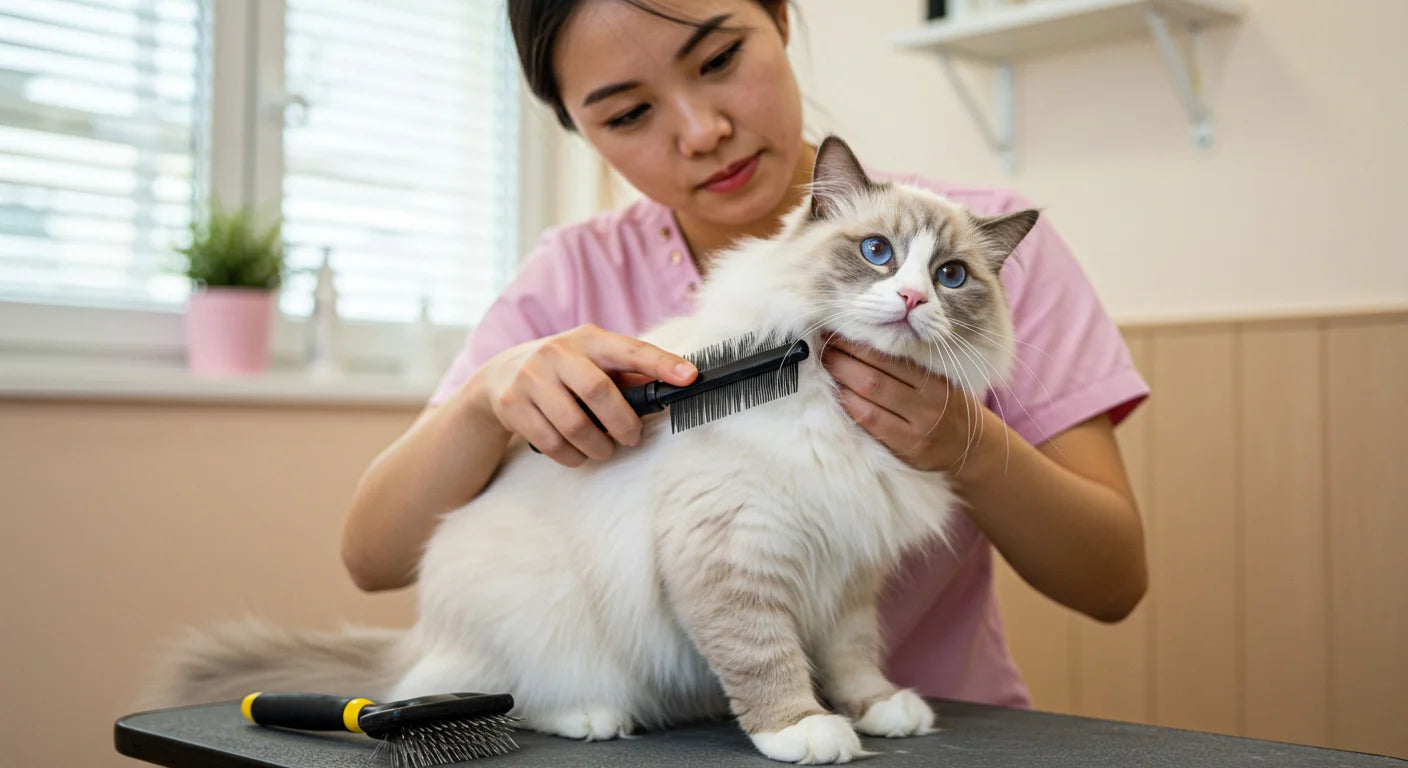
Essential Ragdoll Cat Grooming Techniques
The luxurious and semi-long coat of a Ragdoll cat requires regular grooming to keep it in optimal condition. Understanding how to groom Ragdoll cats properly involves mastering several key techniques that address their specific needs.
Brushing Your Ragdoll's Coat
Ragdolls have a dense and silky coat that is prone to matting and tangling. Regular brushing is essential to prevent mat formation and keep the fur free from debris. Use a stainless steel comb or a slicker brush with wide teeth to gently remove tangles and loose hair. Start brushing from the head and work your way down to the tail, paying special attention to areas prone to matting like behind the ears, under the arms, and the belly area.
Areas that require extra attention during brushing:
-
Behind the ears - Where mats form most frequently
-
Under the arms and legs - High-friction areas that tangle easily
-
Belly and chest - Soft fur that mats quickly if neglected
-
Back legs and "pants" - Dense fur areas that collect debris
-
Tail - Long fur that can become tangled and matted
Aim for at least two to three brushing sessions per week, increasing the frequency during shedding seasons (typically spring and fall). During these periods, daily brushing may be necessary to manage the increased hair loss and prevent matting.
Bathing Your Ragdoll
While Ragdolls are generally fastidious self-groomers, occasional baths can help maintain the cleanliness of their coat and reduce allergens. Use a cat-specific shampoo and lukewarm water to gently cleanse their fur. It's important to rinse the shampoo thoroughly to avoid any residue that could cause skin irritation.
Essential bathing supplies for your Ragdoll:
-
Cat-specific shampoo - Never use human products
-
Non-slip bath mat - To provide secure footing
-
Large, absorbent towels - For immediate drying
-
Cotton balls - To protect the ears from water
-
Blow dryer on cool setting - Optional for faster drying
Bathing should be done as needed, typically every few months, unless your Ragdoll gets into something that requires immediate cleaning. Always ensure the bathroom is warm and draft-free, and have towels ready to dry your cat immediately after the bath.
Nail Care and Trimming
Regular nail trims are necessary to prevent overgrowth and to protect your furniture and skin from accidental scratches. Use cat-specific nail clippers or a grinder designed for cats. Be cautious not to trim too close to the quick (the pink area inside the nail), which can cause bleeding and discomfort.
Start by gently pressing on your cat's paw pads to extend the claws, then trim only the sharp, white tips. If you're unsure about trimming your cat's nails, consult a veterinarian or a professional groomer for assistance and demonstration.
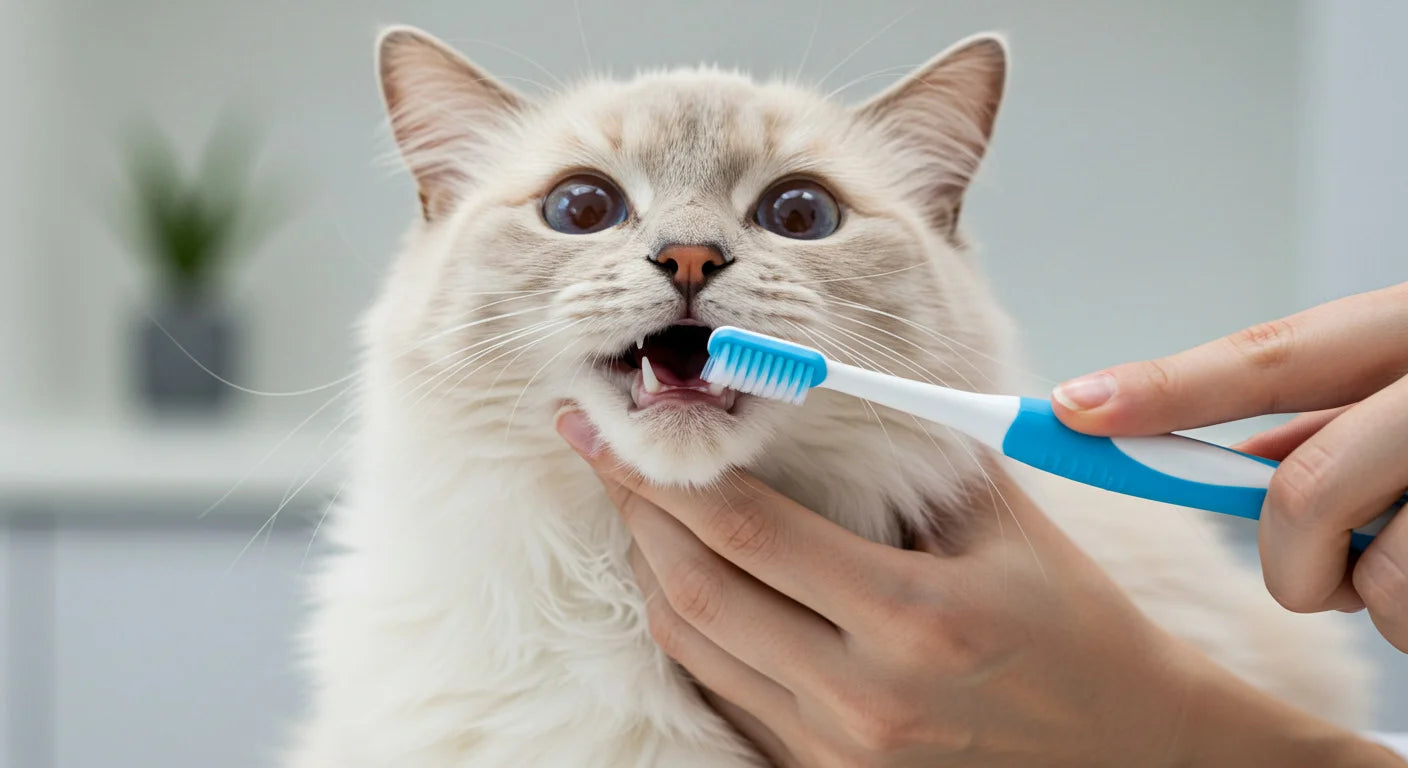
Dental Hygiene Maintenance
Dental care is essential for a Ragdoll's overall health and should be part of your regular Ragdoll grooming routine. Establish a dental care routine by brushing your cat's teeth regularly using a soft toothbrush and cat-specific toothpaste. Never use human toothpaste, as it can be toxic to cats.
Signs that indicate good dental health in your Ragdoll:
-
Pink, healthy gums - No redness, swelling, or bleeding
-
Clean, white teeth - Minimal plaque or tartar buildup
-
Fresh breath - No strong, unpleasant odors
-
Comfortable eating - No difficulty chewing or reluctance to eat
-
Normal behavior - No pawing at the mouth or excessive drooling
This helps prevent the buildup of plaque and tartar, reducing the risk of dental diseases, bad breath, and more serious health issues. Start slowly by letting your cat get used to having their mouth touched before introducing the toothbrush.
Ear Cleaning and Care
Ragdolls, like many other cats, may accumulate wax and debris in their ears. Check their ears regularly for any signs of redness, odor, or discharge that could indicate infection or mites. Clean the outer part of the ears using a cat-specific ear cleaner and a cotton ball or pad.
Avoid inserting anything into the ear canal to prevent injury. Simply wipe the visible areas of the inner ear gently. If you notice a persistent odor, excessive wax, or your cat seems to be scratching their ears frequently, consult your veterinarian.
Eye Care and Cleaning
Ragdolls are prone to tear staining due to their lighter fur and prominent eyes. Use a damp, soft cloth or a cat-specific eye wipe to gently clean the area around their eyes, removing any discharge or staining. Clean from the inner corner of the eye outward, using a fresh section of the cloth for each eye.
If you notice excessive tearing, redness, cloudiness, or signs of infection, consult a veterinarian promptly. Regular eye cleaning not only keeps your Ragdoll looking their best but also helps you monitor their eye health.
Conclusion
Mastering Ragdoll cat grooming is one of the most rewarding aspects of owning these magnificent cats. By following the techniques outlined in this guide, you're actively contributing to their health, happiness, and quality of life. The key to successful Ragdoll grooming lies in establishing a regular routine that your cat enjoys, using positive reinforcement to make grooming sessions a bonding experience.
Every groomed Ragdoll cat benefits from comprehensive care – from regular brushing that prevents mats to dental care that supports overall health. Understanding your cat's specific Ragdoll grooming needs allows you to provide the best possible care while catching potential health issues early. With dedication and the right approach, grooming your Ragdoll becomes an enjoyable routine that keeps your feline companion in optimal condition for years to come.
Frequently Asked Questions
1. Do ragdoll cats need grooming more than other cat breeds?
Yes, Ragdoll cats need grooming more than short-haired breeds due to their semi-long, dense coats. Their silky fur tangles and mats easily without regular care, making consistent grooming essential for their comfort and health. Unlike cats with shorter coats, Ragdolls require specialized attention to prevent painful matting.
2. How often do ragdoll cats need grooming sessions?
The frequency of grooming Ragdoll cats depends on the season and your cat's lifestyle. Generally, brushing should occur 2-3 times per week, but during shedding seasons (spring and fall), daily brushing may be necessary. Indoor cats typically need less frequent bathing than outdoor cats, usually every 2-3 months.
3. Can I use regular human brushes on my Ragdoll cat?
No, human brushes aren't designed for cat fur and can damage your Ragdoll's delicate coat. When learning how to groom Ragdoll cats properly, invest in cat-specific tools like slicker brushes with wide teeth or stainless steel combs that won't break or pull their fine fur.
4. Why does my Ragdoll hate being brushed, and how can I fix this?
Many Ragdolls initially resist brushing due to previous negative experiences or sensitivity. Start with very short sessions, offer treats during grooming, and use gentle pressure. If mats are present, work them out slowly rather than pulling, which can create a lasting fear of grooming.
5. How do I know if I'm brushing my Ragdoll correctly?
You're brushing correctly if your cat remains calm, you're not pulling or tugging, and you can easily run the brush through their fur without resistance. Your Ragdoll should seem relaxed or even enjoy the process. If they're trying to escape or showing signs of stress, adjust your technique or take breaks.
Tags:





















































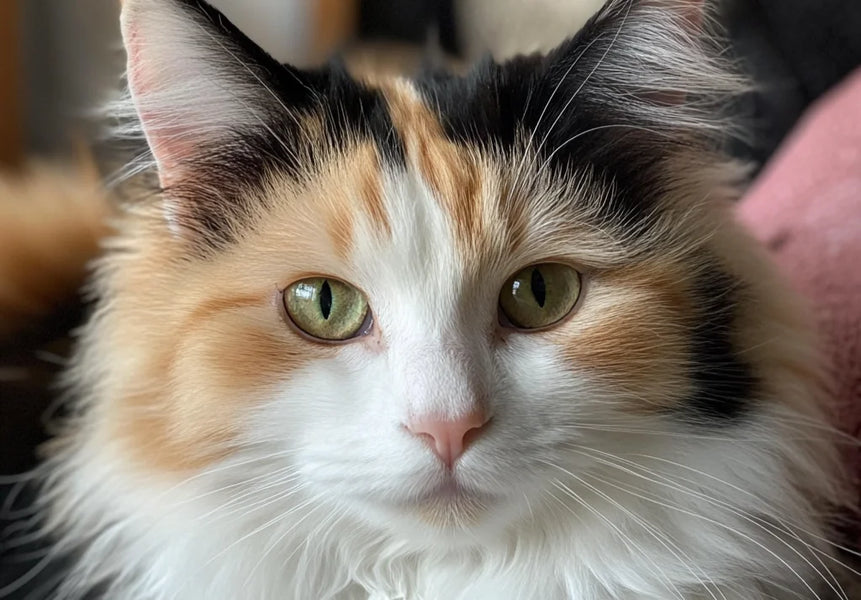

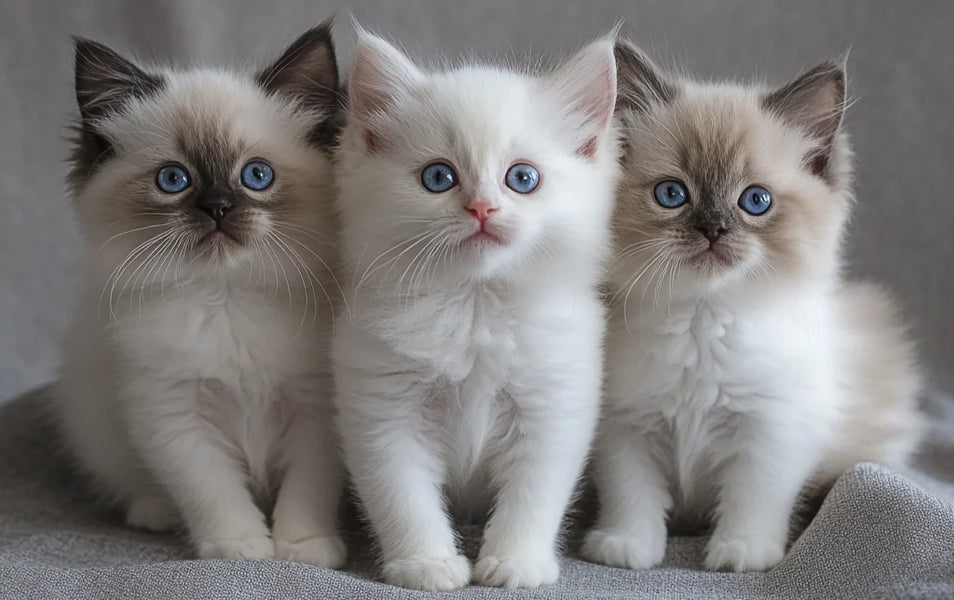
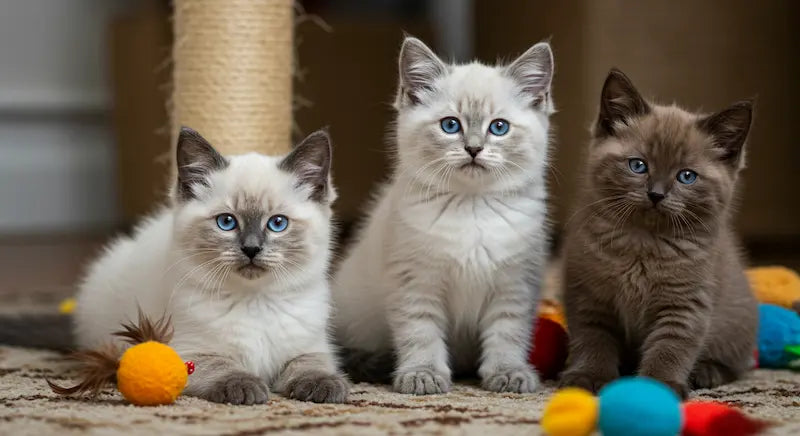




Comments(0)